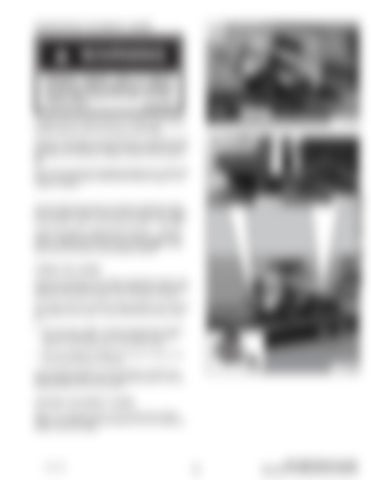TRANSPORTING THE BOBCAT LOADER
A
Adequately designed ramps of sufficient strength are needed to support the weight of the machine when loading onto a transport vehicle. Wood ramps can break and cause personal injury.
W–2058–0494
Support P–10458
A loader with an empty bucket or no attachment must be loaded backward onto the transport vehicle [A]. The rear of the trailer must be blocked or supported when loading or unloading the loader to prevent the front end of the trailer from raising up. Some ramps provide support [A].
B
P–10462
Use the following procedure to fasten the Bobcat loader to the transport vehicle to prevent the loader from moving during sudden stops or when going up or down slopes [B].
P–10464
Lower the bucket or attachment to the floor . Stop the engine. Engage the parking brake. Install chains at the front and rear loader tie down positionsInset [B]. Fasten each end of the chain to the transport vehicle. TOWING THE LOADER To prevent damage to the loaders hydrostatic system, the loader must be towed only a short distance at slow speed. (Example: Moving the loader onto a transport vehicle).
Dealer Copy -- Not for Resale
Be sure the transport and towing vehicles are of adequate size and capacity (See SPECIFICATIONS Page 91, for weight of loader.)
The towing chain (or cable) must be rated at 1 & 1/2 times the weight of the loader . (See SPECIFICATIONS Page 91.) • Turn the key switch to ON and press the Traction Lock Override button. This will not work unless the engine is running because of the RPM sesnor. • Tow the Bobcat at 2 MPH (3,2 km/hr) or less for not more than 25 feet (7,6 meters). 6707867
If the electrical system is not functioning, contact your Bobcat loader dealer. (Part of the brake system must be disassembled to move the loader.)
P–10460
STOPPING THE BOBCAT LOADER When the steering levers are moved to the neutral position, the hydrostatic transmission will act as aservice brake to stop the loader.
55 of 120
35
863, 863H Bobcat Loader Operation & Maintenance Manual







